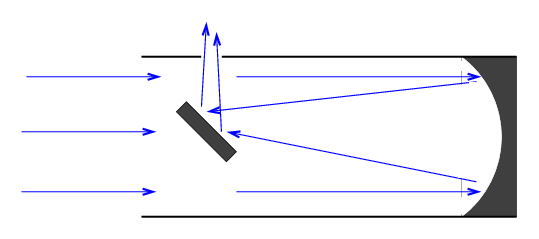
Isaac Newton realized that mirrors would solve the problem of chromatic aberration: they can bring light of ALL wavelengths to a common focus. He designed a telescope which used mirrors to reflect light; hence, this type is called a reflector.

The mirror in a reflector can be supported not only around the edges, but also all over the back surface. That means that very large mirrors can be placed into telescopes. The Subaru Telescope has a primary mirror over 8 meters in diameter.
But astronomers want telescopes even larger than 8 meters in diameter. It turns out that it's almost impossible to create and then support a single piece of glass larger than 8 meters. So -- astronomers have started to make segmented mirror telescopes.
The Keck Telescopes

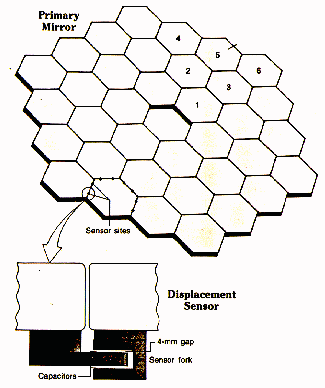
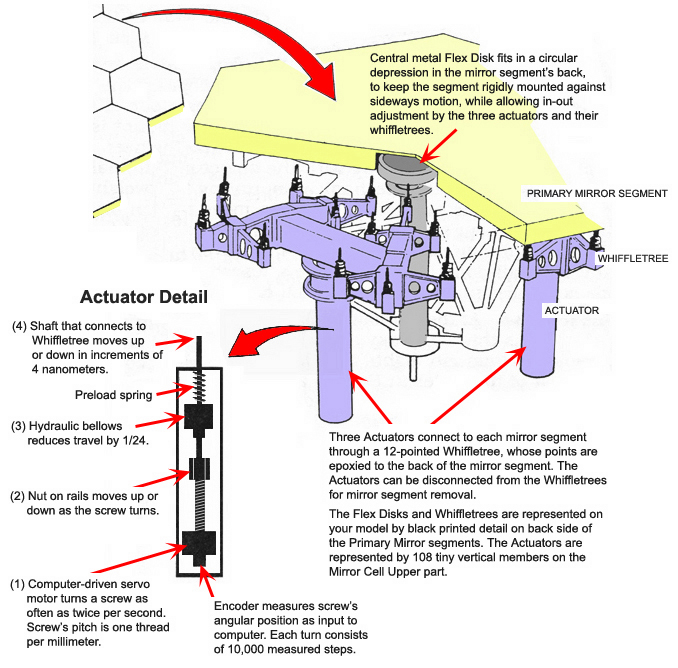
The Hobby-Eberly Telescope
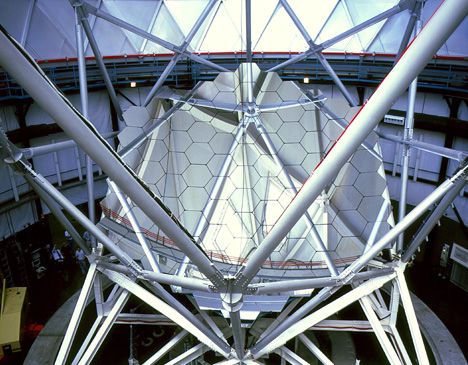
Why build large telescopes? It's not to magnify objects -- the Earth's atmosphere blurs everything to a minimum resolution of about 1 arcsecond. In order to see really fine detail in the optical, you have to move your telescope above the atmosphere:
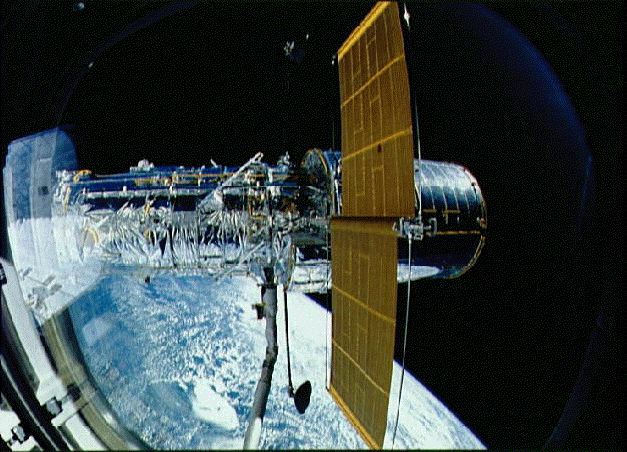
The real reason astronomers want big telescopes is to detect
fainter and fainter objects.
The faintest object visible in a telescope depends on
the amount of light the telescope can gather ...
which in turn depends on its
collecting area:
2
area = pi * (radius)
Note that the collecting area increases as the square
of the radius (or diameter).
Q: The pupil in your eye has a diameter of about 5 mm.
The little telescope at the front of the class has a
diameter of about 4.25 inches.
What is the ratio of collecting area of the telescope
to collecting area of the eye?
How many times fainter are the faintest objects you can see
in the telescope, compared to the faintest object you can
see with your naked eye?
How large would a telescope have to be in order to allow you to see a single candle 20 km away?
How large would a telescope have to be in order to allow
you to see a star like the Sun ... which was near the center
of the Milky Way Galaxy?
One-eyed Fred lights a candle one night. He places it
in the middle of a big field and walks away
from it. When Fred is L1 = 200 meters
away from the candle, he can just barely
see its light, with his pupil dilated
to its full diameter of d = 5 mm.
Fred walks for the next day and night,
so that he is now L2 = 20,000 m away from the
candle. He can't see it with his naked eye.
But he CAN see it, just barely, when he looks
through his telescope.
What is the diameter of Fred's telescope?
When you look up at the sky, you can just barely see the
star called 18 Scorpii. This star is very similar to
the Sun, but it appears much fainter because it is so far away.
The intensity of light from the Sun is about
I(sun) = 1300 W/m^2
The intensity of the light from this star is about
-10
I(Sco) = 1.6 x 10 W/m^2
Q1: How many times fainter is 18 Sco than the Sun?
Q2: How far away must 18 Sco be? (Hint: 1 light-year
is about 9.4 x 10^(15) meters)
You can just barely see 18 Sco with your own eye, which
has a diameter of about 5 mm. Suppose that we moved
18 Sco from its current location to the center of the
Milky Way Galaxy -- to a distance of 25,000 light-years.
Q3: How many times fainter would 18 Scorpii become if we moved it
to the center of the Milky Way?
Q4: How large would a telescope have to be in order for it
to collect enough light for your eye to see the star
at this distance?
For more information